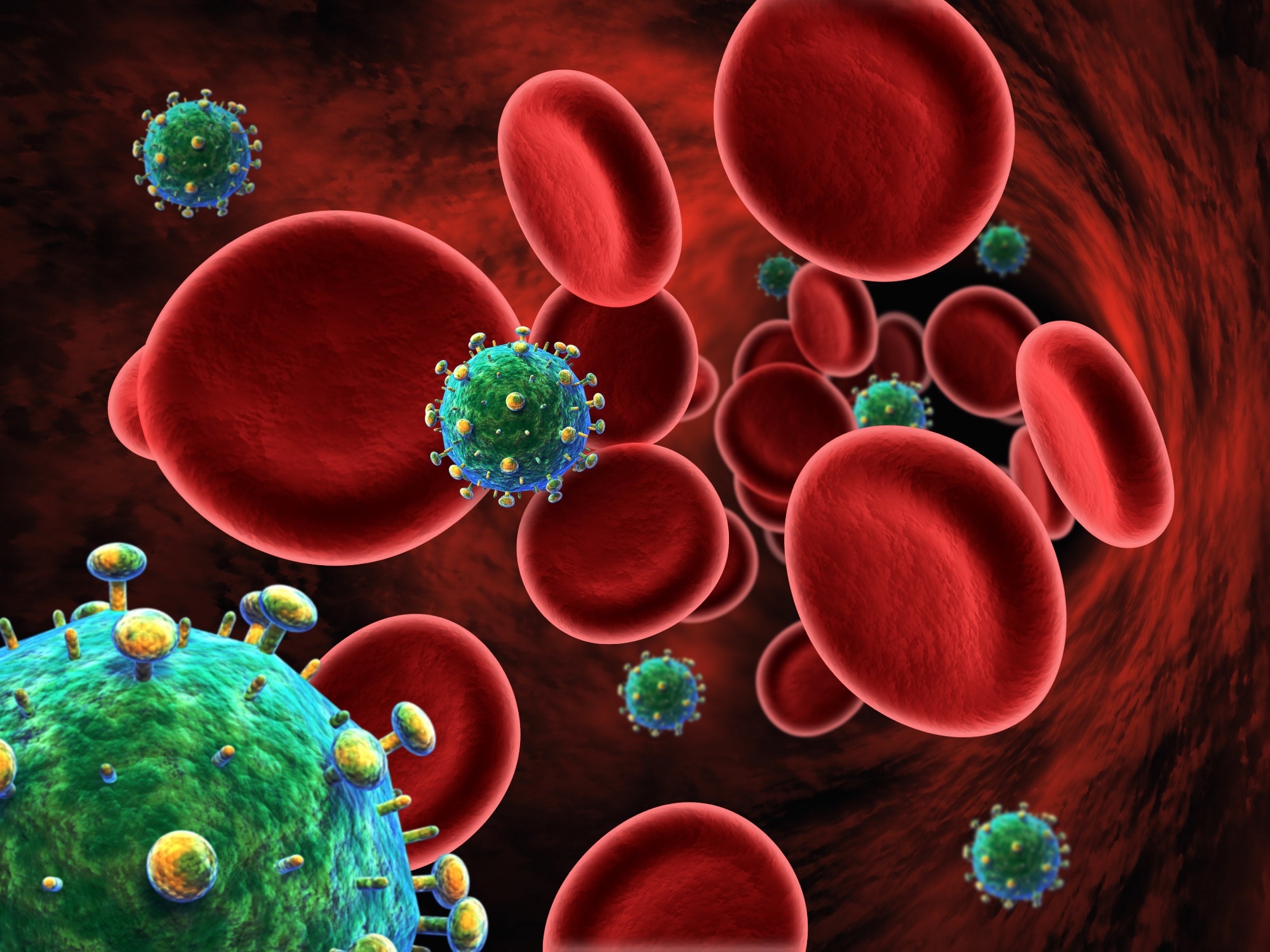The key obstacle against the cure of human and simian immunodeficiency virus (HIV/SIV) infections is the reservoir of proviruses, which are robustly incorporated into the genomes of host CD4+ T cells. As a result, these viruses persist following anti-retroviral therapy (ART) and cause virus rebounds upon ART cessation in most cases.
Although previous studies showed that allogeneic hematopoietic stem cell transplantation (alloHSCT) from donors who lack C-C chemokine receptor 5
(CCR5Δ32/Δ32) can cure human immunodeficiency virus (HIV), its mechanism was not clearly demonstrated. A recent study in the journal Immunity used a nonhuman primate model to better understand the underlying mechanism behind the therapy. Allogeneic immunity was found to be the primary driver of virus clearance following alloHSCT.
 Study: Allogeneic immunity clears latent virus following allogeneic stem cell transplantation in SIV-infected ART-suppressed macaques. Image Credit: BioMedical / Shutterstock
Study: Allogeneic immunity clears latent virus following allogeneic stem cell transplantation in SIV-infected ART-suppressed macaques. Image Credit: BioMedical / Shutterstock
Background
There are four published cases of HIV cure, referred to as the Berlin, Dusseldorf, London, and New York City patients. All these patients were cured through alloHSCT from CCR5 Δ32/Δ32 donors. Since this treatment is unsuitable for many, it is imperative to understand the underlying mechanism behind the success of this treatment. This understanding could have a profound implication for millions of people living with HIV (PLWH).
There are three hypotheses for the mechanisms behind alloHSCT-mediated HIV cure. The first hypothesis, linked with pre-transplant immune conditioning, could eliminate the viral reservoir. The second is associated with donor-cell-mediated allogeneic immunity in eliminating latently infected cells, and the third one is reconstituted
CCR5Δ32/Δ32 immune system, which could be resistant to HIV rebound events.
It must be noted that both Dusseldorf and London patients received a reduced-intensity conditioning (RIC) regimen before alloHSCT. This shows that myeloablative conditioning similar to the one administered to the Berlin patient is not essential for transplant-mediated HIV cure. However, autologous HSCT in SIV/SHIV-infected monkeys and PLWH indicated that myeloablative conditioning without complementing allogeneic immunity has a marginal impact on the viral reservoir. This study reveals that allogeneic immunity and CCR5 deficiency are major driving factors for HIV cure following alloHSCT.
Several inherent challenges are associated with HIV studies in clinical settings, such as diverse ART and transplant regimens, low case numbers, limited tissue and blood availability, varied infection history, and reservoir size, and the need for long-term ART interruption to validate cure. Many of these limitations could be overcome by a pre-clinical model of alloHSCT, which would provide greater insights into the immunological processes that eliminate latent HIV.
About the Study
As stated before, currently, CCR5Δ32/Δ32 alloHSCT is the only treatment that has successfully cured HIV by eliminating virus reservoirs. Scientists face many hurdles while analyzing the underlying mechanism for this treatment. Considering these limitations, a clinically relevant nonhuman primate model of fully MHC-matched alloHSCT was developed based on Mauritian cynomolgus macaques (MCMs) that are susceptible to HIV infection. Here, at a reduced intensity, CCR5wt/wt alloHSCT was subjected to MCMs, infected with pathogenic SIVmac239, and under long-term ART suppression.
Study Findings
Four alloHSCT recipient MCMs were monitored at least every 2 weeks for four years. This study included longitudinal biopsies of spleen and mesenteric lymph nodes that are not easily investigated in humans. The findings of this study indicated that allogeneic immunity is the key driver of reservoir clearance. The viral clearance starts from peripheral blood, followed by peripheral lymph nodes, and finally, in mesenteric lymph nodes draining the gastrointestinal tract. This mechanism facilitates graft-versus-reservoir (GVR) effects in HIV infection, which resembles the effect of graft-versus-leukemia (GVL) in cancer.
Approximately a 1000-fold decrease in the SIV reservoir was observed in all four alloHSCT recipients. Although the exact function of the CCR5Δ32/Δ32 donor immune system in alloHSCT-mediated HIV cure remains unknown, the current study indicated that a protective mechanism is associated with CCR5 deficiency early during engraftment. For instance, a lack of CCR5 protects donor CD4+ T cells from infection through cell-to-cell viral spread. The engrafting donor immune system promotes allogeneic immunity and eliminates infected recipient CD4+ T cells.
Limitations
The current study has some limitations, including the fact that the RIC regimens that were adopted in this study were distinct from clinical regimens. This is because of the differences in drug efficacy between humans and macaques. However, every constituent of the conditioning regimen utilized mimics clinical approaches. Another limitation of this study is linked to its small cohort size of alloHSCT-recipient MCM. The initiation of ART at 9–15 days post-infection is another caveat because, in most cases, PLWH do not start ART this early.
Conclusions
The current study provided evidence that allogeneic immunity is the key mechanism behind the elimination of the latent viral reservoir following alloHSCT. The authors proposed a novel strategy that could be applied broadly across PLWH to cure HIV, which is linked with an adequate increase of GVR in PLWH undergoing alloHSCT and promoting allogeneic immunity. An in-depth characterization of alloreactive T cells from transplanted individuals would uncover new T cell therapies for HIV cure.